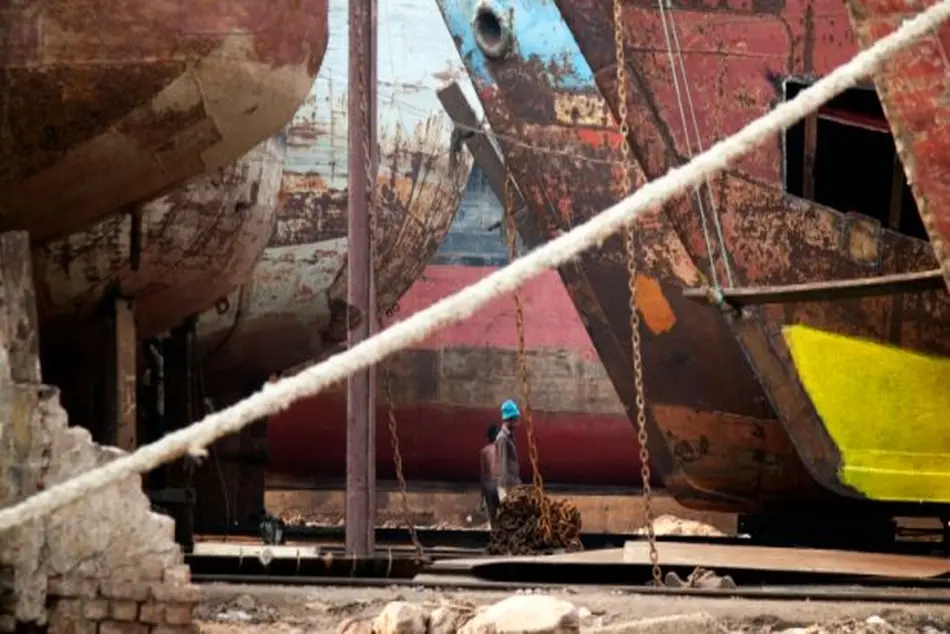Inventory of Hazardous Materials: Current status & best practice

TIN news: Henning Gramann, Chairman, IHMA, talked about the “Inventory of Hazardous Materials: Current status & best practice”. Mr. Gramann noted that the new legal requirements for Recycling of Ships have become a pressing issue for all ships, no matter if brand new or very old. A key requirement all for EU-registered and all EU-visiting ships above 500GT is to have a certified Inventory of Hazardous Materials (IHM) onboard until end of 2020. Approx. 30,000 ships are affected and time for IHM-development is short. During his presentation, Mr. Gramann gave insights into IHM development for new and existing ships, related capacity issues and how IHMA supports shipowners to meet the tight deadline.
The Hong Kong Convention requires a certified Inventory of Hazardous Materials (IHM) for each vessel no later 5 years after entry into force of the Convention, which probably will happen many years ahead of us. Nevertheless, the EU has implemented the EU Ship Recycling Regulation setting a clear deadline for IHM onboard. The EU Regulation has entered into force in 2013 allowing the industry 7 years for compliance with the requirement. Legislators also provide related guidelines like e.g. Guidelines for the Development of IHM (Res. MEPC.269(68)); Guidelines for Safe and Environmentally Sound Ship Recycling (Res. MEPC.210(63)) and; ECSA Best Practice Guidance on IHM.
The IHM is needed for identification of suitable Ship Recycler by owners. It can be used for identifying risks during ship operations as it informs crew, repair and conversion yards about hazardous materials onboard, contributing to incident and accident preparedness and response. It enables ship recyclers to plan the recycling of a ship by considering hazardous material during ship recycling and planning of decontamination activities in order to deploy specifically trained workers, select and use of proper PPE (personal protective equipment) and plan in advance the removal and disposals of HazMats. Also, ships are getting ready for recycling certification needed. The IHM for new ships is completely different from the IHM of existing ships. In my opinion, IHM for new ships requires much more effort as it is much more time consuming.
IHM for new ships
The shipyard is responsible for compiling the IHM based on information provided by suppliers via the Suppliers Declaration of Conformity (SDoC) and the Material Declaration (MD) in which the supplier makes a clear statement whether or not HazMats are contained. If they are contained, the supplier must specify place and quantity. The EU has added two more HazMats, the so called PFOS and HBCDD, therefore the EU IHM is different from the IMO IHM.
IHM for existing ships
The owner is responsible for the IHM which should be prepared by IHM professionals and is based on investigation, samplings, analyses, calculations and documentation. The accuracy of an IHM depends on planning; expertise on sampling locations (materials – indicative lists); number of samples taken; detail of documentation; laboratory standards and expertise; and the interpretation of laboratory results.
EU Regulation on Ship Recycling
New ships are required to have an IHM onboard from 30 Dec 2015 while all existing ships under EU-flag or any flag when visitng an EU-port, until 30 Dec 2020. All EU-ships heading sent for recycling since end of 2016 are obliged to have a certified IHM onboard as well.
The Hong Kong Convention will apply to approximately 48,000 ships while the EU Regulation on Ship Recycling to 30,000 ships. The deadline means that from today and onwards until 2020, 36ships per day have to get a certified IHM. The truth is that at the moment we´re far below this figure; the industry is not prepared.
There are three possible scenarios regarding the supply and demand of the IHM:
Firstly, to have a linear increase due to constant demand and doubling of supply every year.
Secondly, to have a gradual increase due to increasing demand and supply.. At the moment, there is more supply than demand, meaning that if you go for an IHM at the moment, you can easily negotiate on the price. We are expecting in the couple years this situation to change as supply & demand ratio affects pricing. This means that prices will go up in future.
Thirdly, to have a progressive increase which I believe it is most likely due to last minute rush for the IHM-deadline, as previous examples in the industry have indicated as well. In that case, the supply will try to follow the demand and of course the price will go up higher.
Nevertheless, no matter what, I do believe that it is highly unlikely for all the 30,000 ships to have an IHM onboard at the end of 2020. When I discussed about it at the European Commission, they didn’t consider granting extensions, because the industry had seven years to prepare from entry into force of EU-Regulation in 2013.
In conclusion, the deadlines are fixed and a huge number of ships is addressed, therefore, an increase of IHM-orders is necessary. IHMA global network ensures compliant and effective IHM preparations already and plans for training of more IHM experts. Owners are advised to ensure timely preparation, therefore, the following actions are recommended:
- For existing fleet: acquire IHM latest by 2020; order HazMat Professional for IHM soon and get class for certification of IHM
- For new builds: include IHM in building specification (since end of 2015) and get class for certification of IHM
- For last voyage: the EU ships must have a certified IHM onboard and be scrapped at a recycler who is included in the EU-list (published in Dec. 2016)
- For operation: nominate a designated person, use data repository to maintain IHM; set up process to get MDs and SDoCs (suppliers need intensive communication with their supply chains and this may take long time).
